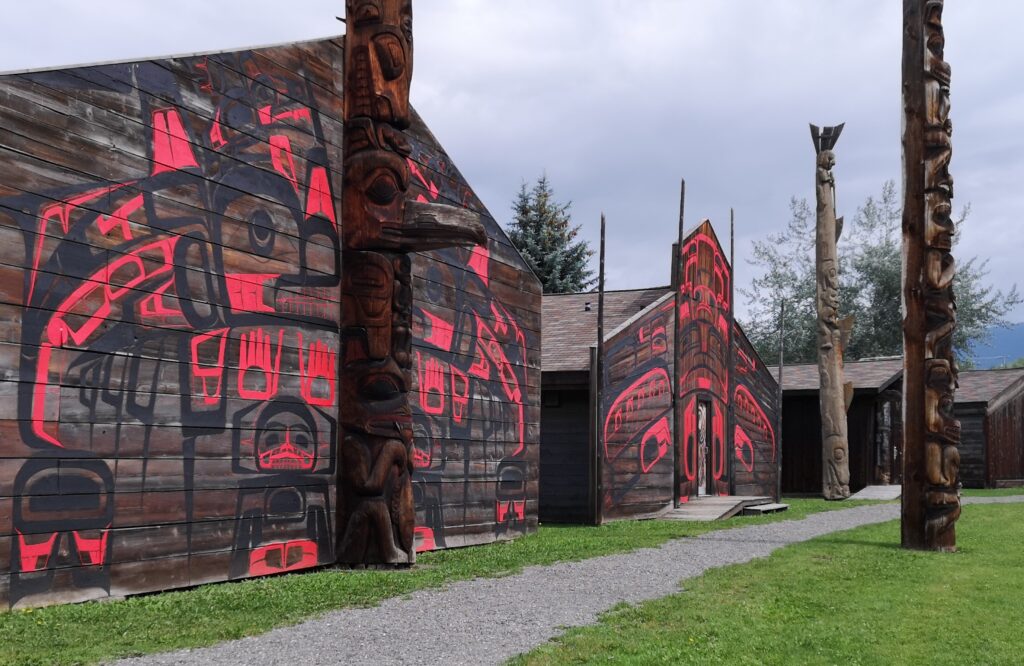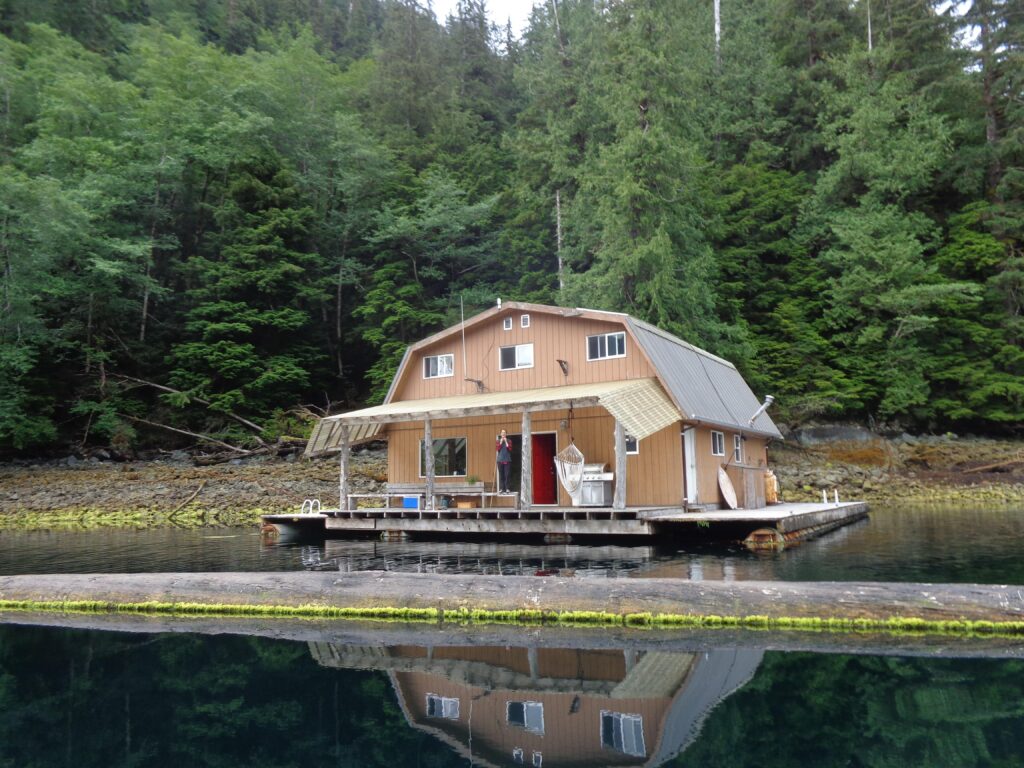We travelled to the farthest western edge of Canada. Past where the continent ends, there is an archipelago of islands out in the Pacific that used to be called the Queen Charlotte Islands. Now it is called Haida Gwaii. It is no easy task to get there.
We drove from Vancouver up the Fraser River through the Chilcotin for the most part of two days. The scenery is endless trees, mountains, and very few people.
We stopped at Moricetown Canyon where the Bulkley River narrows to only a few meters and the water rushes through deep pools between the rocks. The Weslewetlun people fish there with long poles with hooks on the ends. They gaff huge salmon waiting in the pools to continue upstream to spawn.
We had a cultural stop at Hazelton to see the K’san Village recreation. A number of long houses were built using the old style, with decorated fronts and totem poles to walk through to enter.
The decorations are like a billboard telling others of the ancestry of the occupants, their clans, their legends.

At the end of the second day we got to Prince Rupert. From there we took an overnight ferry that left around 11PM and arrived at Skidegate in Haida Gwaii at 6 the next morning.
We immediately joined an expedition headed to the southern end of the islands. In all we spent four days in a zodiac boat bouncing on the ocean and dodging around forest covered islands. All of this on our way to SGang Gwaay Llanagaay, a UNESCO World Heritage site at the very southern end of Haida Gwaii.
On our first day travelling south, we stopped at Tanu, The village and its poles have been rotting in the rain since the 1880s. Nevertheless, it is the site of legendary Haida artist Bill Reid‘s grave.
Reid’s masterpiece, Raven and the First Men sits at the University of BC’s Museum of Anthropology and his The Spirit of Haida Gwaii appeared on a Canadian stamp and both sculptures on a $20 bill, with the sculpture on display at the Canadian Embassy in Washington, D.C.
Tanu gave us a taste of what was to come in our tour of the land of the Haida.
We spent the night at a float camp. There are almost no buildings because the entire area is a combined Gwaii Haanas National Park Reserve and Haida Heritage Site, jointly managed by the Haida and Parks Canada, with no one living in an area 570 square miles or 1470 square kilometers – larger than a few countries.
